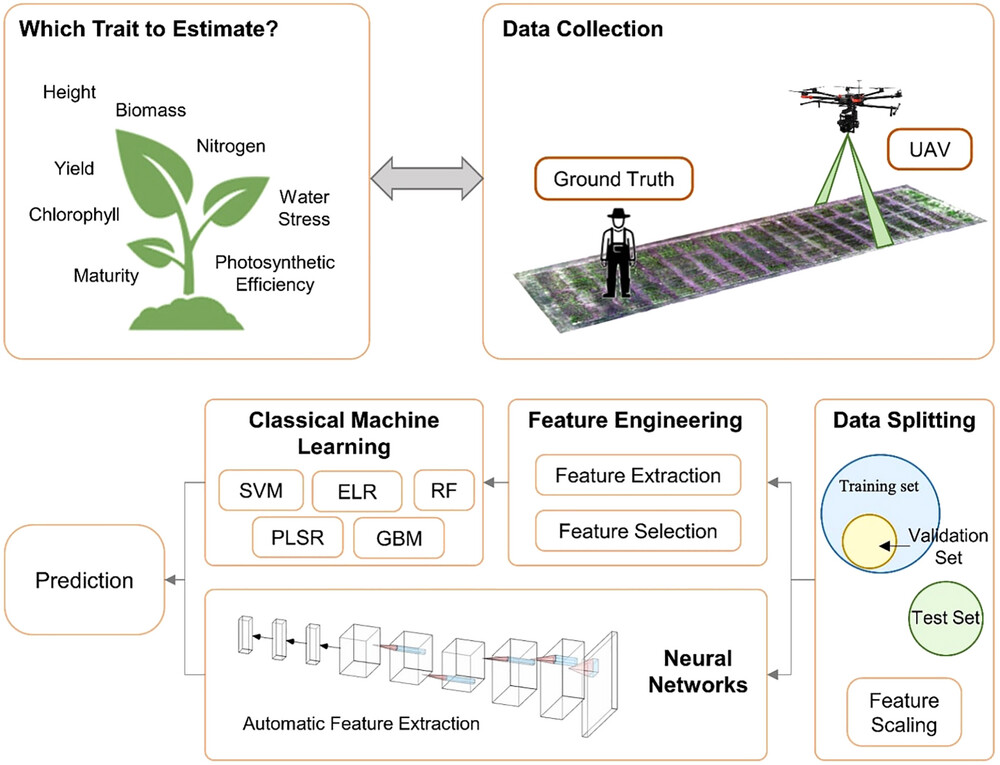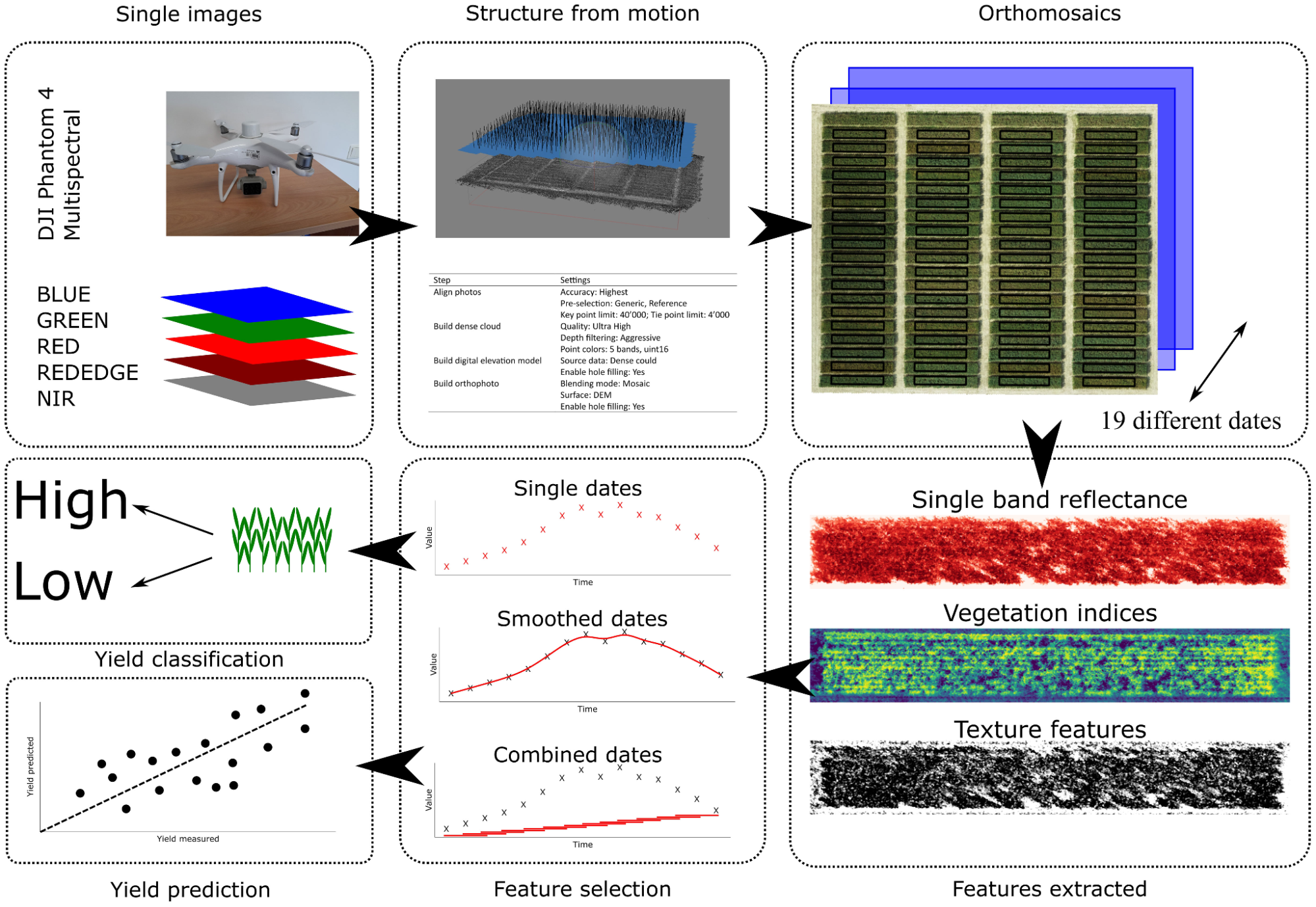Analyzing UAV-Based Multispectral Data for Genotypic-Aware Crop Performance Assessment
What if we rethink how crop monitoring is done in experimental and breeding trials? Instead of treating entire research fields as uniform blocks, this work drills down to the level of individual genotypes, using UAV-mounted multispectral sensors to capture detailed spectral and morphological traits across hundreds of wheat plots. Traditional monitoring methods often mask critical differences among varieties, making it hard for breeders to identify which lines truly outperform others under diverse environmental conditions. By integrating UAV imagery with advanced trait extraction, the project creates a pipeline that can evaluate crop health and performance with unprecedented granularity.

We combine UAV-based remote sensing with statistical filtering and machine learning models. Over the course of a full growing season, drone flights captured temporal reflectance data from wheat plots, covering more than 100 genotypes. From this imagery, vegetation indices and morphological traits are extracted and analyzed to reveal genotype-specific differences in growth patterns and stress responses. These traits are then tested for yield relevance using statistical models, followed by the development of machine learning regressors and deep learning architectures (LSTMs, temporal CNNs) for yield prediction. By merging feature-driven and image-driven approaches, the system identifies which traits matter most and also learns growth dynamics directly from spectral time series.

The impact of this work lies in its ability to accelerate breeding decisions and improve agricultural resilience. The integrated decision-support platform allows breeders to visualize predicted yields, assess trait-level contributions for each genotype, and make informed choices on which varieties to advance. By reducing reliance on manual ground-truthing and shifting toward automated UAV-based data collection, the approach lowers labor costs while scaling to large breeding programs. The insights generated can help pinpoint stress-tolerant, high-yielding genotypes, guide efficient resource management, and ultimately contribute to global food security. Moreover, the framework is designed to be scalable and adaptable, paving the way for genotype-aware monitoring in other staple crops.
Faculty
-
Dr. Muhammad Moazam FrazDr. Muhammad Moazam Fraz
-
Dr. Zuhair ZafarDr. Zuhair Zafar
Students
-
Muhammad Tayyab Iftikhar
-
Muhammad Hissan Umar
-
Abdullah Imran
